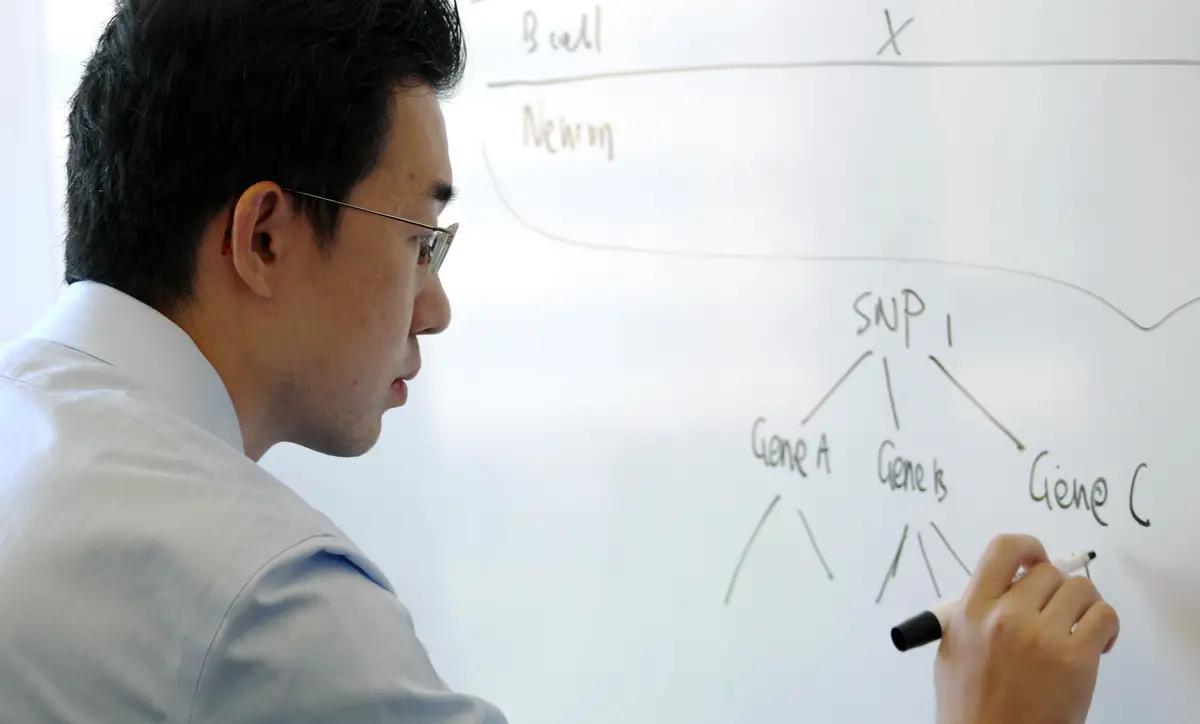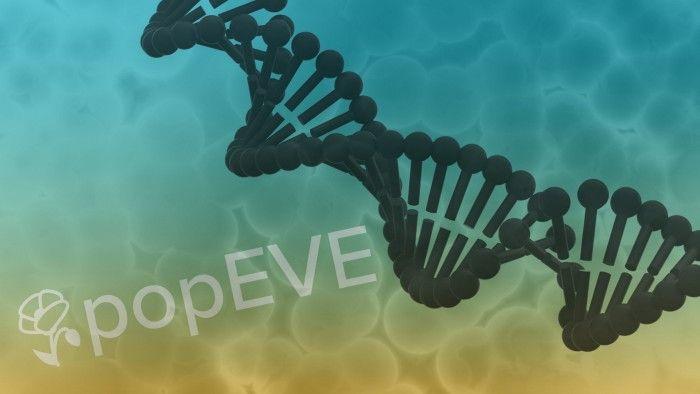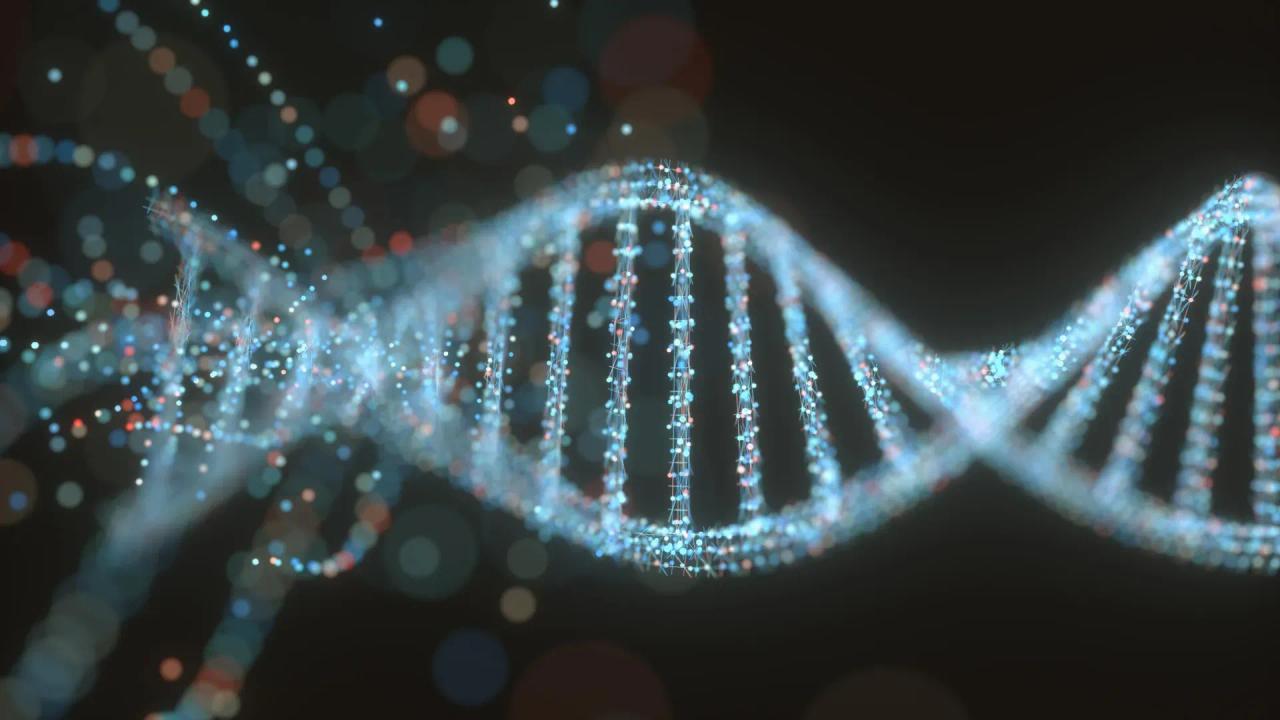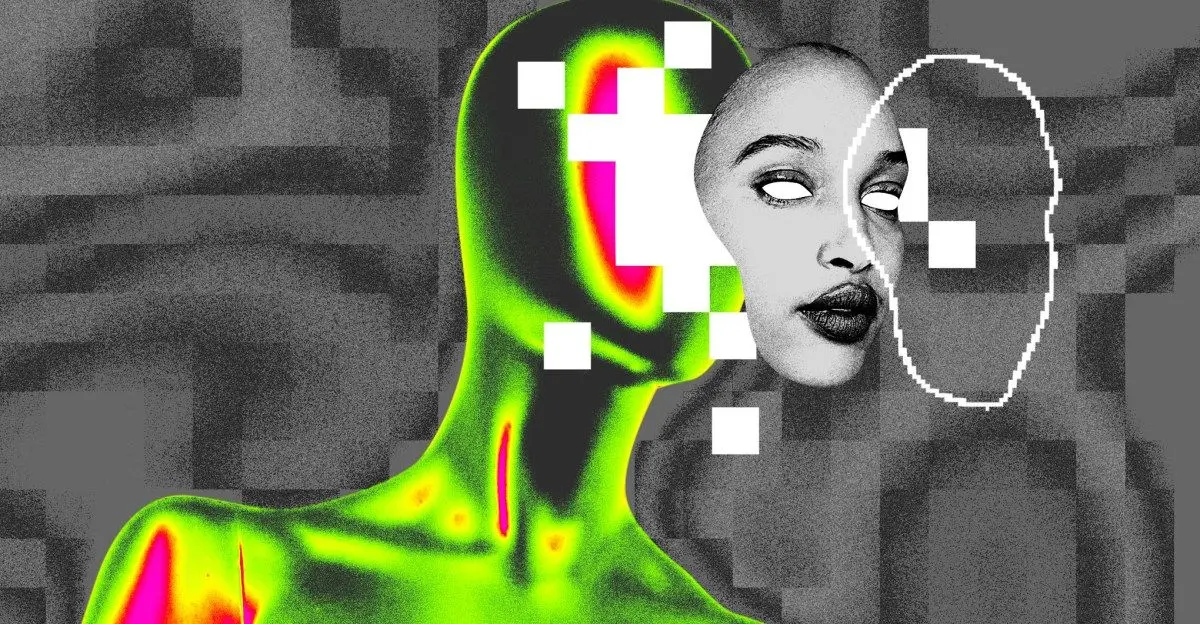AI-Powered KGWAS Method Revolutionizes Rare Disease Research
2 Sources
2 Sources
[1]
Finding Answers Faster: AI Method Brings Hope to Rare Disease Research
An AI-powered tool from Carnegie Mellon University and collaborators is helping uncover genetic clues to rare diseases, potentially accelerating diagnoses and treatments for conditions that affect only a fraction of the population. Researchers typically need data from tens of thousands of patients to study how genetic variants relate to diseases. For rare conditions, those affecting fewer than 0.01% of the population, such large datasets are much harder to gather. To address this challenge, a team including researchers from CMU's School of Computer Science(opens in new window) have developed KGWAS(opens in new window), a deep-learning method that enhances traditional genome-wide association studies. By integrating vast amounts of functional genomics data, KGWAS improves the ability to detect genetic links in small patient cohorts, enabling faster discoveries for rare diseases and potentially enabling the discovery of new drugs or treatments. The new method builds on traditional genome-wide association studies, GWAS, which stands for genome-wide association study. It's a method of scanning the genome of large groups of people to identify certain genetic variants that are associated with certain diseases or other traits. "GWAS is vital to the entire ecosystem for drug discovery," said Martin Zhang(opens in new window), an assistant professor in SCS's Ray and Stephanie Lane Computational Biology Department(opens in new window). "By design, this works by collecting the genetic information for a bunch of people, and then you correlate the genetic mutations with the disease status. But, by definition, you need to see a lot of people with the disease in order to do the correlation. If you only see one person with the disease, then the correlation is going to be very low, and you don't have a lot of statistical power to detect the associations faithfully. For rare diseases, where only .1% or even .01% of people in the population have it, those are cases where GWAS is fundamentally limited." When doing GWAS analyses, there might be genetic information from 100,000 to a million people, and in that, if about 10,000 people have a certain trait or disease, then a researcher can make a correlation between a mutation and that disease. But, for rarer diseases, that number could be somewhere between 300 to 1,000. Researchers can go to hospitals and specifically seek out people with certain diseases, which are called case-controlled studies. This works well for some diseases, like Alzheimer's disease, where there are more resources and people available to study. But it's much harder for rare diseases, like myasthenia gravis, a rare autoimmune disorder that causes weakness in the muscles that control bodily function and movement. There just aren't enough patients in one place, and it takes a lot of time and effort to find them. In this study, researchers developed a method called Knowledge Graph GWAS (KGWAS), which combines a variety of genetic information to make associations between gene variants and specific traits for rarer diseases. The knowledge graph takes information from GWAS and combines it with comprehensive functional genomics data, which is information about a gene's function and interaction. "There are so many different technologies to measure the same thing," said Kexin Huang, a doctoral student at Stanford University's Computer Science Department. "And all of these different measurements capture some part of the biology of the gene. Since we wanted to improve the power of GWAS, we decided to bring in as much information as possible to the process. So, we needed a framework to unify all these different measurement technologies. The knowledge graph is a very natural way to just bridge everything together." In this work, the knowledge graph links the functions and interactions between genetic variants, genes and gene programs, which are predefined groups of genes with shared functions. This KGWAS knowledge graph is one of the largest to date, with 11 million links between genetic variants, genes and gene programs. Then, for a given disease, KGWAS trains an AI model to use the knowledge graph to predict the likelihood or strength of an association of each genetic variant to that given disease based on aggregate GWAS evidence. Along with predicting associations, this method also cuts through the noise in data, making improvements when distinguishing actual disease-associated variants to false ones. When applied to a rare disease with limited data, KGWAS can be used to make better predictions for what genetic variants are linked to certain diseases. Researchers found that KGWAS identified up to 100% more statistically significant associations than state-of-the-art GWAS methods, or achieved the same detection power with about 2.7 times fewer samples. "KGWAS's applications are pretty diverse, ranging from helping in rare disease diagnosis to drug discovery," said Huang. "On the more technical side, it's also a change to the fundamental algorithm of human genetics (GWAS). By making a better GWAS, we can unlock a variety of different downstream tasks. For rare diseases, the KGWAS method has the potential to make real improvements." When researchers are better able to make these connections between genetic variants and certain diseases, more targeted treatment applications could be developed. "With KGWAS, we are trying to put everything together," Zhang said. "It's like a framework that can automatically transform the functional data we have into discoveries."
[2]
Finding answers faster: AI method brings hope to rare disease research
An AI-powered tool from Carnegie Mellon University and collaborators is helping uncover genetic clues to rare diseases, potentially accelerating diagnoses and treatments for conditions that affect only a fraction of the population. Researchers typically need data from tens of thousands of patients to study how genetic variants relate to diseases. For rare conditions, those affecting fewer than 0.01% of the population, such large datasets are much harder to gather. To address this challenge, a team including researchers from CMU's School of Computer Science have developed KGWAS, a deep-learning method that enhances traditional genome-wide association studies. By integrating vast amounts of functional genomics data, KGWAS improves the ability to detect genetic links in small patient cohorts, enabling faster discoveries for rare diseases and potentially enabling the discovery of new drugs or treatments. What is GWAS? The new method builds on traditional genome-wide association studies, GWAS, which stands for genome-wide association study. It's a method of scanning the genome of large groups of people to identify certain genetic variants that are associated with certain diseases or other traits. "GWAS is vital to the entire ecosystem for drug discovery," said Martin Zhang, an assistant professor in SCS's Ray and Stephanie Lane Computational Biology Department. "By design, this works by collecting the genetic information for a bunch of people, and then you correlate the genetic mutations with the disease status. "But, by definition, you need to see a lot of people with the disease in order to do the correlation. If you only see one person with the disease, then the correlation is going to be very low, and you don't have a lot of statistical power to detect the associations faithfully. For rare diseases, where only 0.1% or even .01% of people in the population have it, those are cases where GWAS is fundamentally limited." When doing GWAS analyses, there might be genetic information from 100,000 to a million people, and in that, if about 10,000 people have a certain trait or disease, then a researcher can make a correlation between a mutation and that disease. But, for rarer diseases, that number could be somewhere between 300 to 1,000. Researchers can go to hospitals and specifically seek out people with certain diseases, which are called case-controlled studies. This works well for some diseases, like Alzheimer's disease, where there are more resources and people available to study. But it's much harder for rare diseases, like myasthenia gravis, a rare autoimmune disorder that causes weakness in the muscles that control bodily function and movement. There just aren't enough patients in one place, and it takes a lot of time and effort to find them. What is KGWAS? In this study, available on the medRxiv preprint server, researchers developed a method called Knowledge Graph GWAS (KGWAS), which combines a variety of genetic information to make associations between gene variants and specific traits for rarer diseases. The knowledge graph takes information from GWAS and combines it with comprehensive functional genomics data, which is information about a gene's function and interaction. "There are so many different technologies to measure the same thing," said Kexin Huang, a doctoral student at Stanford University's Computer Science Department. "And all of these different measurements capture some part of the biology of the gene. "Since we wanted to improve the power of GWAS, we decided to bring in as much information as possible to the process. So, we needed a framework to unify all these different measurement technologies. The knowledge graph is a very natural way to just bridge everything together." In this work, the knowledge graph links the functions and interactions between genetic variants, genes and gene programs, which are predefined groups of genes with shared functions. This KGWAS knowledge graph is one of the largest to date, with 11 million links between genetic variants, genes and gene programs. Then, for a given disease, KGWAS trains an AI model to use the knowledge graph to predict the likelihood or strength of an association of each genetic variant to that given disease based on aggregate GWAS evidence. Along with predicting associations, this method also cuts through the noise in data, making improvements when distinguishing actual disease-associated variants from false ones. When applied to a rare disease with limited data, KGWAS can be used to make better predictions of what genetic variants are linked to certain diseases. Researchers found that KGWAS identified up to 100% more statistically significant associations than state-of-the-art GWAS methods, or achieved the same detection power with about 2.7 times fewer samples. "KGWAS's applications are pretty diverse, ranging from helping in rare disease diagnosis to drug discovery," said Huang. "On the more technical side, it's also a change to the fundamental algorithm of human genetics (GWAS). By making a better GWAS, we can unlock a variety of different downstream tasks. For rare diseases, the KGWAS method has the potential to make real improvements." When researchers are better able to make these connections between genetic variants and certain diseases, more targeted treatment applications could be developed. "With KGWAS, we are trying to put everything together," Zhang said. "It's like a framework that can automatically transform the functional data we have into discoveries."
Share
Share
Copy Link
Carnegie Mellon University researchers develop KGWAS, an AI-enhanced method that significantly improves genetic association studies for rare diseases, potentially accelerating diagnoses and treatments.
Revolutionizing Rare Disease Research with AI
Researchers from Carnegie Mellon University (CMU) and collaborators have developed a groundbreaking AI-powered tool called KGWAS (Knowledge Graph Genome-Wide Association Study) that promises to accelerate rare disease research. This innovative method enhances traditional genome-wide association studies (GWAS) by integrating vast amounts of functional genomics data, potentially leading to faster diagnoses and treatments for conditions affecting only a fraction of the population
1
2
.
Source: Medical Xpress
The Challenge of Rare Disease Research
Rare diseases, defined as those affecting fewer than 0.01% of the population, pose significant challenges for researchers. Traditional GWAS methods require data from tens of thousands of patients to study genetic variants associated with diseases. For rare conditions, gathering such large datasets is extremely difficult
1
.Martin Zhang, an assistant professor at CMU's School of Computer Science, explains the limitations of traditional GWAS:
"By definition, you need to see a lot of people with the disease in order to do the correlation. If you only see one person with the disease, then the correlation is going to be very low, and you don't have a lot of statistical power to detect the associations faithfully."
1
KGWAS: A Game-Changing Approach
KGWAS addresses these challenges by combining GWAS with comprehensive functional genomics data using a knowledge graph framework. This approach allows researchers to make better predictions about genetic variants linked to rare diseases, even with limited patient data
2
.Key features of KGWAS include:
- Integration of multiple data sources: KGWAS combines various genetic information to create a comprehensive knowledge graph
1
. - Massive scale: The KGWAS knowledge graph contains 11 million links between genetic variants, genes, and gene programs
2
. - AI-powered predictions: KGWAS uses deep learning to predict the likelihood of associations between genetic variants and diseases
1
.

Source: CMU
Impressive Results
The researchers found that KGWAS significantly outperforms traditional GWAS methods:
- Up to 100% more statistically significant associations identified
1
2
. - Equivalent detection power achieved with approximately 2.7 times fewer samples
1
2
.
These improvements could be game-changing for rare disease research, where patient cohorts are typically small.
Related Stories
Potential Applications and Impact
KGWAS has diverse applications, ranging from rare disease diagnosis to drug discovery. Kexin Huang, a doctoral student at Stanford University's Computer Science Department, highlights the method's potential:
"By making a better GWAS, we can unlock a variety of different downstream tasks. For rare diseases, the KGWAS method has the potential to make real improvements."
1
The ability to make stronger connections between genetic variants and rare diseases could lead to more targeted treatment applications and accelerate the drug discovery process
2
.Future Prospects
As KGWAS continues to develop, it may revolutionize the field of human genetics and rare disease research. Martin Zhang emphasizes the tool's potential:
"With KGWAS, we are trying to put everything together. It's like a framework that can automatically transform the functional data we have into discoveries."
1
This innovative approach brings new hope to millions of people affected by rare diseases worldwide, potentially leading to faster diagnoses, more effective treatments, and improved quality of life.
References
Summarized by
Navi
[2]
Related Stories
Recent Highlights
1
Nvidia drops $20 billion on AI chip startup Groq in largest acquisition ever
Business and Economy

2
Meta acquires Manus for $2 billion, adding revenue-generating AI agents to its platforms
Business and Economy

3
China proposes world's strictest AI chatbot rules to prevent suicide and emotional manipulation
Policy and Regulation







